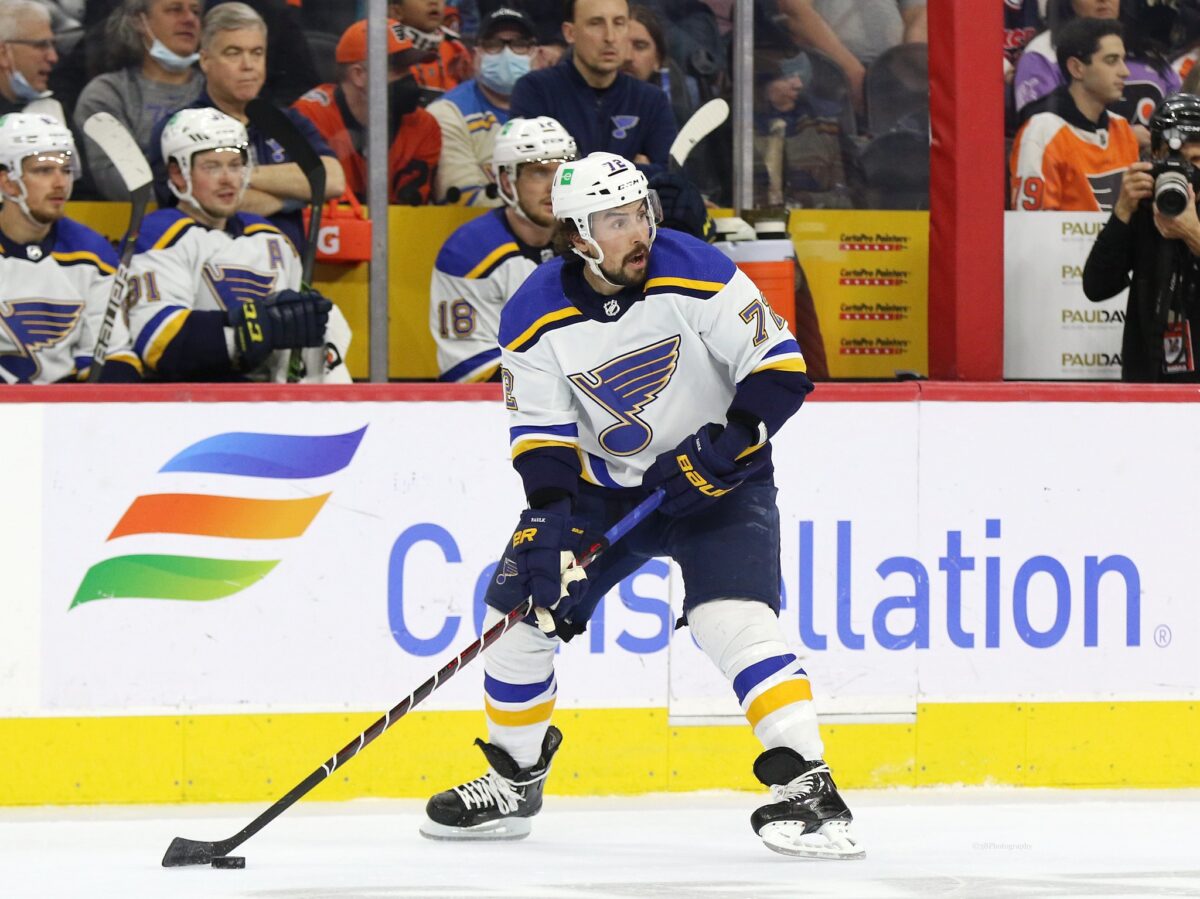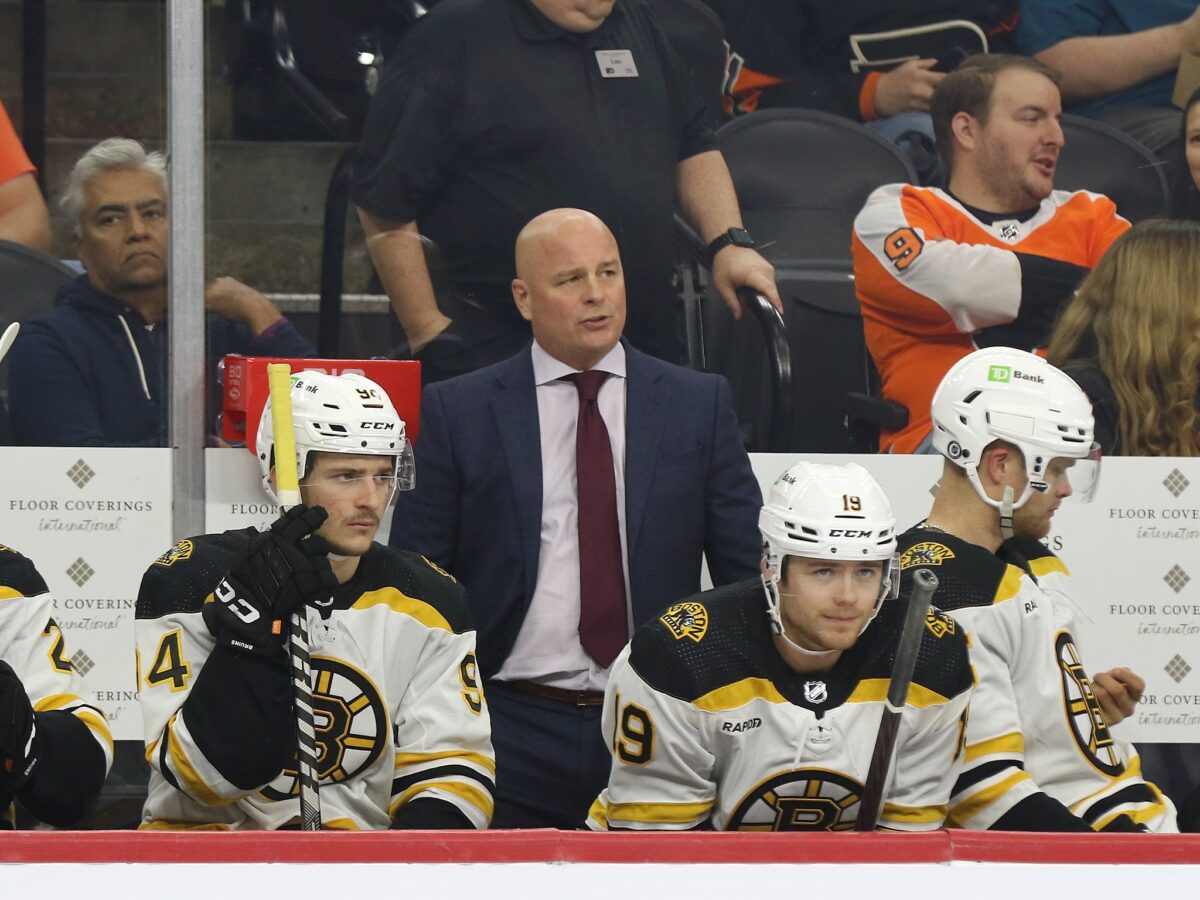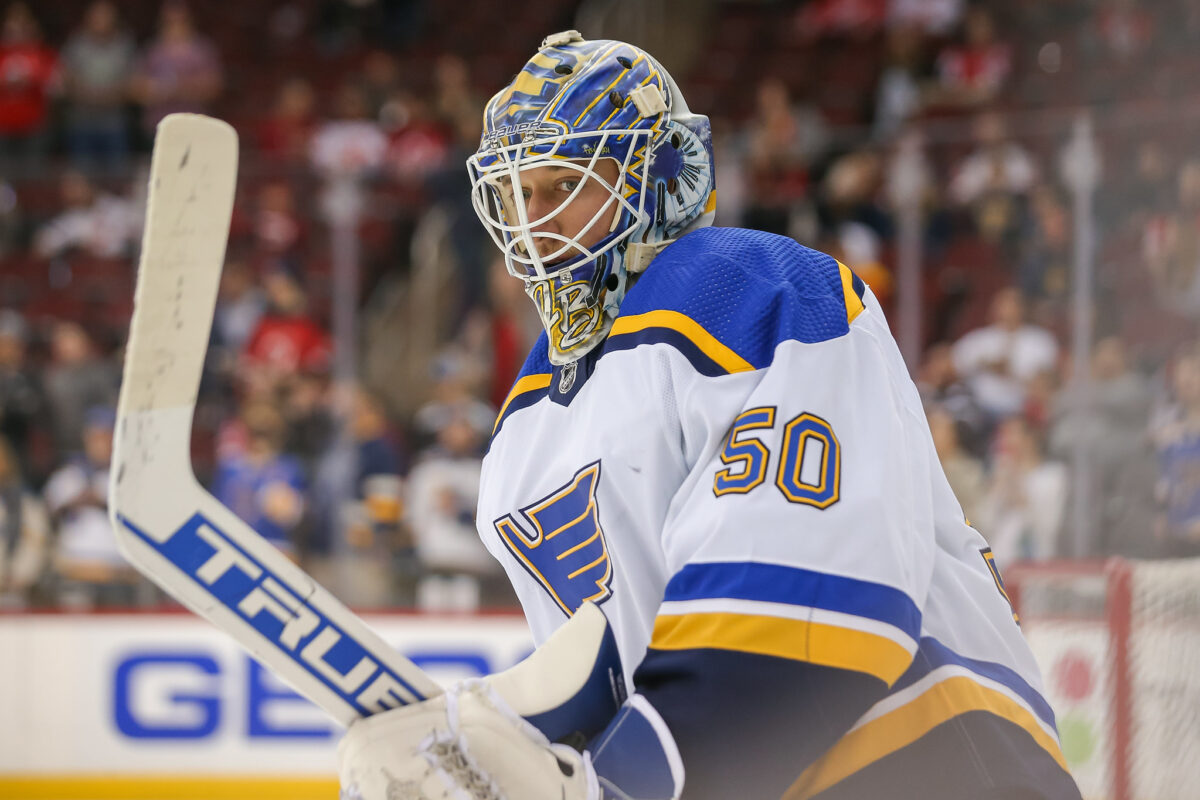A lot went wrong for the St. Louis Blues during the 2022-23 season. Although there were a few high points, the lows seemed to be the deepest the organization has had since the firing of former head coach Mike Yeo in November 2018. In finishing 37-38-7 (81 points), they missed the playoffs for the first time since 2017-18 and just the second time in the last 12 seasons.
For the Blues to have successfully retooled their roster and compete for a playoff spot in 2023-24, they’re going to need a lot to go in their favor. Below are what I believe are the three keys to the club’s success as they hope for a bounce-back season and take advantage of a weak Central Division.
Key #1: Blue Line Bounce Backs
After a season in which all of the Blues’ top-four defensemen had career-worst seasons, it seemed to be a foregone conclusion that Armstrong would find a way to move at least one of their high-priced defenders. There was a bit of smoke around Torey Krug being moved to the Philadelphia Flyers as part of the Hayes trade, but ultimately that didn’t happen due to Krug utilizing his no-trade clause (NTC). With that falling through, the Blues’ expensive, aging, and underperforming quartet of Krug, Justin Faulk, Nick Leddy, and Colton Parayko will be rolled out once again as the top four on opening night.

The hope for the 2023-24 season is that all four of these guys – not just one, two, or even three – have seasons in which their numbers bounce back closer to their career norms or better. With all of them being 30+ years old, achieving career-bests in almost any metric is a tall order at this point in their careers. But if they can shore up the defensive aspects of their game and get closer to being league-average, the forward group can do enough scoring to keep them in every game.
Key #2: Special Teams & Defensive Philosophies
One of the major fall-outs between the Blues’ last two seasons was the success of both the power play (PP) and penalty kill (PK). In 2021-22, they had one of the absolute best special teams units in the NHL, with the league’s second-ranked PP (27%) and fifth-ranked PK (84.1%). Former assistant coach Jim Montgomery was primarily involved with the special teams during his time in St. Louis (2020-2022) and his system was a key factor to that unit’s overall success. Now the head coach with the Boston Bruins, who had the 12th-ranked PP and first-ranked PK (87.3%), it’s easy to see just how much his departure mattered to the special teams units as a whole. In response, former Blue Craig MacTavish was hired to assume that role.

Fast forward to this offseason. With major changes needed to their defensive and special teams structures, both MacTavish and assistant coach Mike Van Ryn (responsible for running the defense) were relieved of their duties. Replacing them are two new faces in Mike Weber (assistant coach) and Michael Babcock (skills coach). Weber, a former NHL defenseman, will be tasked with running the D-corps. Babcock, son of long-time NHL head coach Mike Babcock, ran the defense and PP, during his time as a coach at the University of Saskatchewan before spending last season with the Ottawa Senators. He’ll be tasked with handling skill work for the club.
Related: Blues Top 10 Prospects for 2023-24
The Blues will absolutely need to see substantial improvement from both of their special team’s units if they want to have even an outside shot at playoff contention this season. The hope is that these two young coaches (Weber – 35 years old; Babcock – 28 years old) will be able to better connect with the younger core leaders on this team while imprinting fresh philosophies for the entire club.
Key #3: Consistency in Net
Since signing a six-year extension in the spring of 2021, the play of Jordan Binnington has been anything but consistent. In 98 combined games between the 2021-22 and 2022-23 seasons, he’s made 97 starts with a record of 45-41-10, a .897 save percentage (SV%), and a 3.24 goals against average (GAA). Between his wildly up-and-down play, being outperformed at times by his backup, and his unpredictable behavior when he’s on the ice, Binnington has done little to prove that he was worth the payday he received two years ago.

Backing him up this season will be 22-year-old rookie Joel Hofer, who appears to have a more contrasting style to the incumbent. While Binnington likes to play a bit wide out of the crease and is an all-or-nothing netminder, Hofer maintains his angles between the pipes, keeping the puck in front, and plays it safe and predictable. If Binnington can’t regain some of his form from 2018-19 and stumbles at any point this season, Hofer will get a legitimate chance at taking on the lion’s share of starts. Consistent play (and attitude) from whoever is in the crease this season may prove to be the biggest determining factor for their success in 2023-24.
Related: 3 Blues Under the Microscope in 2023-24
How well this team looks coming out of the gates in September will surely be determined by these three keys. The offense packs enough of a punch to rank in the top half of the league in goals per game. If the defense can rebound from an atrocious season, the PK and PP can move toward league average, and the Binnington-Hofer duo bring consistency every night, the Blues could find themselves in playoff contention come the 2024 trade deadline.
